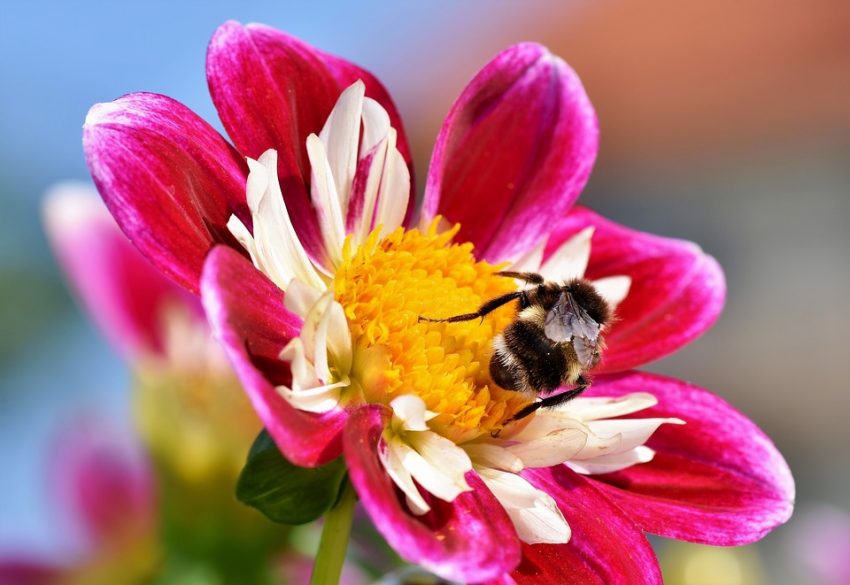Honeybees, as well as bumblebees, are essential to nature and our food. In recent years, more bees have died than usual. This is because bees not only make honey but also pollinate flowers and plants. Having a bee-friendly garden can help them survive. Here are some tips to get started!
Flowers For Bees
It doesn’t matter how big your garden is. Place flowers and plants in your garden or balcony that will attract bees and wild bees. Choose a variety that can bloom for several months. This is because bees need plants that bloom from spring to fall. Not only bees but butterflies also like to fly on these species:
Heaven Key
Botanical Crocus
Zenegreen
Cranesbill
Hyssop
Lavender
Pigeon herb
Lamp cleaner
Roses
Wild marjoram
Nest
A bee nest is often made in crevices and holes in wood or walls or plant stems. A bee hotel mimics this natural situation, as it were. For example, you can set up a honey bee hotel in your garden or put a junk shed. Allow bees to build a hive in the garden. They need this hive to raise their larvae. They supply pollen to the hive and lay their eggs there. Different types of bees require other spaces to build their nests. You can easily make these yourself from wood and bamboo, but you can also buy them ready-made.
Insect Load
Would you like to keep bees in your garden, but you’re bothered by other insects? As a precaution, choose environmentally friendly products. Do not use aerosols, granules, or other pesticides that contain substances such as imidacloprid, thiacloprid, or acetamiprid. They are poisonous to bees. This is because poisons not only harm the bees but also affect your health.
Remove aphid-infested branches and leaves. Instead of throwing them into the compost pile, throw them in with the organic waste. This way, the animals will not return to your garden.
Use nettles and garlic to make alternatives to chemical pesticides against feeding insects. Extracts of garlic, soybeans, onions and plant-derived essential oils can be environmentally friendly alternatives to chemical pesticides.
Cut 5 garlic cloves into appropriate sizes. Pour 1 liter of boiling water over them and let it stand for a while. Filter it, add 3 liters of water and spray the plants daily. Do this for at least five days.

Wait for Pruning
Some bees hibernate in spent flower stalks. For this reason, it is best to wait until spring to remove spent stems. Pruning in spring only will protect your plants from frost. Two birds with one stone, what more could you ask for?
Enjoy
Think of bees as sweet, beneficial pets that you can’t hug. They make delicious honey and create a variety of flowers and plants bloom beautifully. If you come across one in your garden, observe it and enjoy it. Enjoy that beautiful piece of nature in your garden.
Do Not Use Chemical Pesticides
Are you bothered by other insects and weeds in your garden? Then use environmentally friendly products instead of pesticides (crop protectants, herbicides, and biocides) to combat them. These chemicals are not only harmful to bees but also affect your health. Do you have weeds growing among your tiles and plants? Then pull them out or hoe them away.

Bees in Your Vegetable Garden
Insects pollinate more than 70% of all plants. Bees are perfect for fertilizing fruit and vegetable plants and providing the necessary biodiversity in your garden. Your vegetable garden would look very different without these yellow and black heroes. As with the purchase of flower seeds, fruit and vegetable seeds need to be of organic origin. Recommendations for your vegetable garden are zucchini, chives, and broccoli. Do you have more space in your garden? Then choose a cherry, pear, or apple tree. The flowers of these vegetables, fruits, and herbs are a true feast for the bee.
Share your thoughts with us in the comments below!

